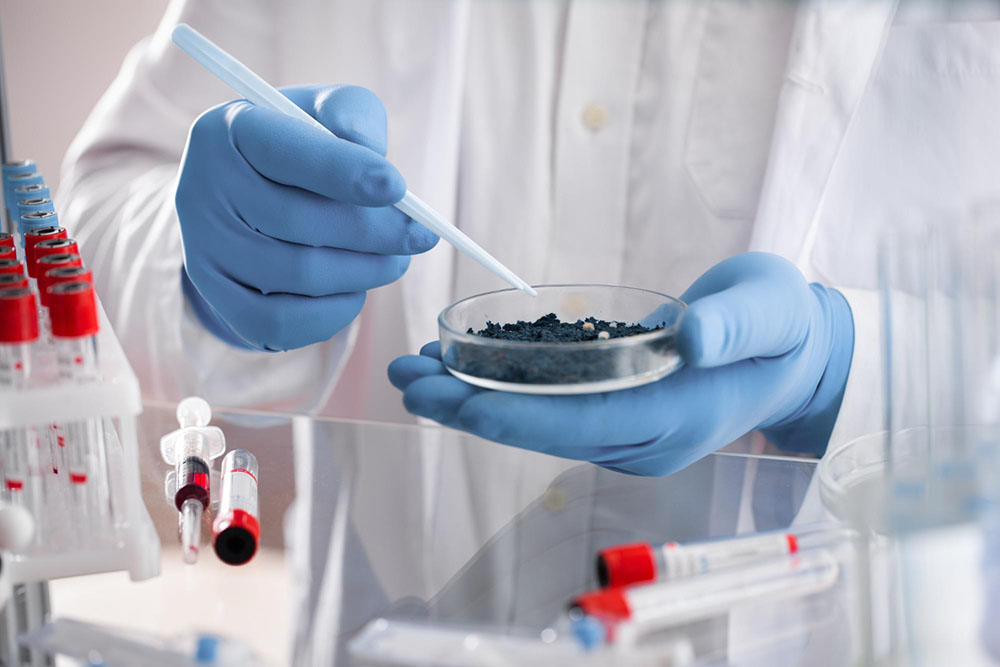
Microdosing Psychedelics: The Science, Benefits, and Future Prospects

Mental Health | November 17, 2023 | BY Sozo Centers
Microdosing is the practice of consuming small, sub-perceptual doses of psychedelic substances like LSD or psilocybin mushrooms. These doses are typically a fraction of what is considered a full recreational dose, often around 1/10th to 1/20th of a typical amount. Microdosing has gained attention for its potential cognitive and therapeutic benefits.
As we delve into the science of microdosing, it’s essential to mention that the Multidisciplinary Association for Psychedelic Studies (MAPS) is a reputable source for valuable information and research on this topic. MAPS has been at the forefront of psychedelic research and therapy, and their insights contribute significantly to our understanding.
Understanding the science behind microdosing is crucial for making informed decisions about its potential benefits and risks. In this blog, we’ll explore the historical context, the neurochemistry involved, the benefits, and the research findings that shed light on this intriguing practice.
The Psychedelics Used in Microdosing
Microdosing with psychedelics has gained popularity in recent years for its purported cognitive and mood-enhancing effects. Among the various substances used, LSD (lysergic acid diethylamide) and psilocybin, found in magic mushrooms, are the most commonly employed. Here, we will delve into these substances’ unique properties and effects in microdosing contexts.
- LSD (Lysergic Acid Diethylamide)
LSD, a synthetic compound, is known for its powerful psychedelic properties in larger doses. However, in microdosing, individuals typically may consume sub-perceptual amounts, around 10-20 micrograms. The effects of microdosing LSD can include enhanced creativity, improved focus, and heightened mood without the typical hallucinations associated with higher doses. Users often report increased energy and productivity.
- Psilocybin (Magic Mushrooms)
Psilocybin is a natural compound found in various species of psychedelic mushrooms. Microdosing psilocybin may result in improved mood, reduced anxiety, and increased empathy. Users have reported heightened sensory perception and a greater sense of connection with their surroundings.
The choice of these specific psychedelics for microdosing is influenced by several factors:
- Potency: LSD and psilocybin are potent compounds, allowing users to achieve desired effects with minimal substance intake, reducing the risk of adverse events.
- Duration: Both LSD and psilocybin have relatively long durations of action compared to other psychedelics, making them suitable for intermittent microdosing schedules.
- Safety Profiles: These substances have relatively low toxicity levels and a history of safe use in controlled environments, which contributes to their appeal in microdosing.
- Empirical Evidence: Anecdotal reports and limited research suggest positive effects, further supporting their selection.
- Availability: LSD and psilocybin are more accessible than some other psychedelics, making them easier to obtain for microdosing purposes.
The Science Behind Microdosing
Neurochemistry of Psychedelics
- Serotonin Receptors
Psychedelics like LSD and psilocybin interact with serotonin receptors in the brain, primarily the 5-HT2A receptor subtype. These substances are partial agonists at these receptors, meaning they activate them to varying degrees. This interaction leads to altered signaling in the brain, affecting perception, mood, and cognition.
Serotonin plays a pivotal role in mood regulation and perception. It’s involved in maintaining emotional stability, and imbalances are associated with mood disorders like depression and anxiety. The disruption of serotonin signaling by psychedelics can lead to shifts in mood and altered sensory experiences, contributing to their psychedelic effects.
- Default Mode Network
The Default Mode Network (DMN) is a network of brain regions associated with self-referential thinking, introspection, and ego. It’s active when the mind is at rest and not focused on external tasks. Psychedelics like LSD and psilocybin can disrupt the DMN’s normal activity, leading to a decrease in ego-bound thoughts and a sense of interconnectedness with the environment. This altered DMN function is thought to underlie the dissolution of the ego and the profound altered states of consciousness often experienced during full-dose psychedelic trips.
How Microdosing Differs from Full Doses
Microdosing differs significantly from full-dose psychedelic experiences in several ways:
– Dosage: In microdosing, individuals may take sub-perceptual doses, typically around 1/10th to 1/20th of a full dose. This avoids the intense hallucinations and ego dissolution associated with full doses.
– Frequency: Microdosing is typically done on a regular schedule, often every few days, while full doses are sporadic, occurring less frequently.
– Intensity: Microdosing aims to provide subtle, barely noticeable effects that enhance daily functioning, whereas full doses produce profound and sometimes overwhelming experiences.
– Purpose: Full doses are often used for introspection, spiritual exploration, or therapeutic breakthroughs, while microdosing is primarily utilized for cognitive enhancement and mood regulation.
Mechanisms of Action
Cognitive Enhancement
Microdosing may enhance cognitive functions through various mechanisms, including increased neuroplasticity and serotonin modulation. Research suggests that it can improve problem-solving, creativity, and focus, though the exact mechanisms are still being explored.
Mood Regulation
Microdosing has shown promise in alleviating symptoms of anxiety and depression. Some anecdotal reports and preliminary research suggest that it can have mood-regulating effects. It’s hypothesized that microdosing may help by promoting positive emotional states and reducing symptoms associated with mood disorders.
Creativity Boost
Microdosing has been associated with fostering creativity and divergent thinking. Individuals who microdose often report increased ideation, enhanced artistic expression, and a broader perspective on problem-solving. Several creative professionals have shared their experiences with microdosing, attributing it to their creative output.
Neuroplasticity refers to the brain’s ability to adapt and reorganize by forming new neural connections throughout life. Psychedelics, including microdosing, have been hypothesized to influence neuroplasticity by promoting the growth of new synapses and enhancing neural communication. This may lead to improved learning, memory, and cognitive flexibility.
While more research is needed to fully understand the relationship between microdosing, psychedelics, and neuroplasticity, early findings suggest that these substances have the potential to positively impact brain adaptation and learning processes.
Benefits of Microdosing
Anxiety and Depression
Microdosing has gained attention for its potential to alleviate symptoms of anxiety and depression. Some users report improved mood, reduced anxiety, and enhanced emotional well-being after incorporating microdosing into their routines. While the mechanisms are not fully understood, it’s believed that microdosing may modulate serotonin receptors and promote positive emotional states.
Relevant studies on this topic are limited due to legal restrictions on psychedelic research. However, anecdotal evidence suggests that microdosing has been helpful for some individuals in managing mood disorders. Further research is needed to establish its efficacy and safety.
PTSD
Microdosing has shown promise in the treatment of post-traumatic stress disorder (PTSD). Psychedelics, including MDMA and psilocybin, have been investigated in clinical trials for their potential to reduce PTSD symptoms. While microdosing is less studied in this context, it’s hypothesized that its effects on emotional regulation and fear processing may benefit individuals with PTSD.
Promising research findings suggest that microdosing could complement traditional therapies for PTSD. However, more controlled studies are necessary to confirm its effectiveness and safety.
Future Prospects of Microdosing
Current Trends and Popularity
Microdosing has experienced a surge in popularity in recent years. Online communities, books, and anecdotal reports have contributed to its growing interest. The practice has gained recognition not only for its potential therapeutic benefits but also for cognitive enhancement and creativity.
Microdosing communities have formed, sharing experiences, dosing protocols, and advice. These communities have become hubs for information exchange and support for individuals exploring microdosing.
Predictions for Future Research
The future of microdosing research is likely to be dynamic:
– Clinical Trials: We can anticipate an expansion of clinical trials examining the therapeutic potential of microdosing for various mental health conditions. These studies will provide more rigorous scientific data.
– Neuroscientific Advances: Advances in neuroimaging and neuroscience may help elucidate the mechanisms of microdosing, shedding light on how it affects the brain and behavior.
– Customized Protocols: Research may lead to the development of more personalized microdosing protocols, considering factors such as individual differences and specific therapeutic goals.
– Safety and Long-Term Effects: Studies investigating the long-term safety and effects of microdosing will likely become a priority.
At Sozo, we are at the forefront of revolutionizing mental health treatment. We believe in exploring cutting-edge therapies to help individuals unlock their full potential and overcome mental health challenges. Our groundbreaking offering is the Sparavato treatment, an innovative approach that has shown remarkable promise in alleviating symptoms of depression and transforming lives. Let’s make a difference.

